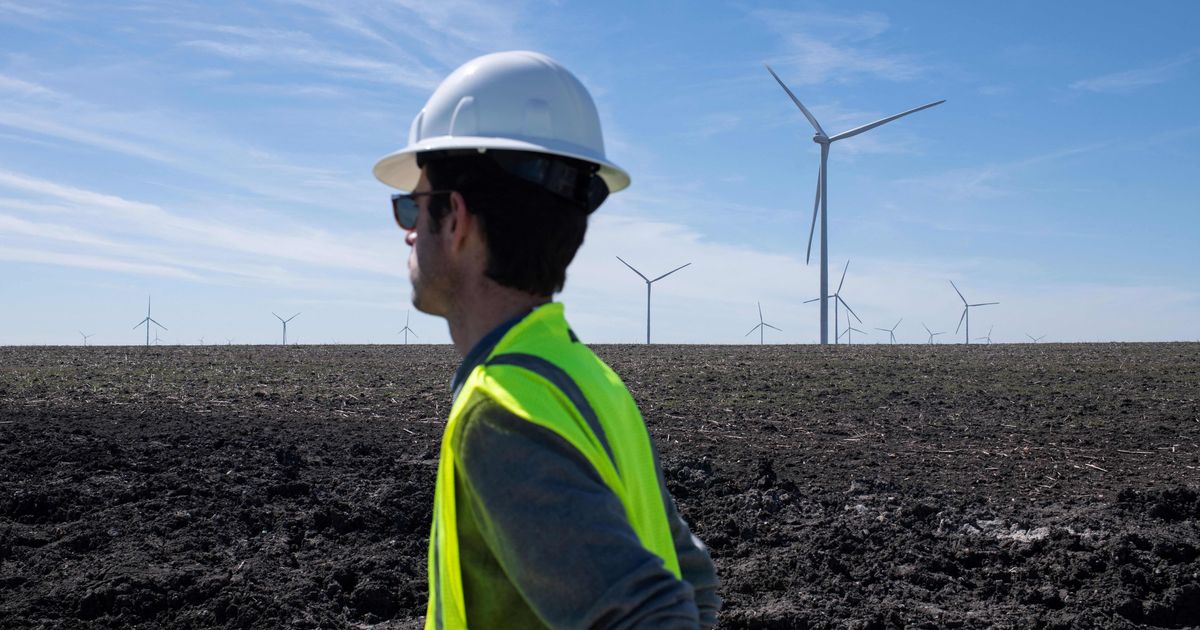Federal lawmakers in Washington, D.C. are engaged in discussions on how to accelerate the development of wind turbines, solar panels, and transmission lines to keep up with increasing demand and combat nationwide blackouts. They aim to provide a viable alternative to fossil fuels and reduce planet-heating emissions. However, local governments across the country are implementing zoning restrictions on wind and solar projects, severely limiting the land available for generating clean energy. A study conducted by the National Renewable Energy Laboratory (NREL) revealed that the number of counties with wind turbine siting ordinances has quadrupled from 105 in 2018 to 461 in 2022. Similarly, there are around 315 municipalities with regulations on solar panel installation. This trend showcases the significant influence wielded by local governments, which has not been considered in previous renewable energy growth forecasts.
These findings, recently published in the journal Nature Energy, demonstrate the limitations of relying solely on tax credits, like those introduced in President Joe Biden’s Inflation Reduction Act, to drive renewable energy growth. While some regulations may simply establish official processes, the majority are restrictive in nature. Michael Gerrard, an environmental lawyer from Columbia University, attributes this to opposition from NIMBY (not in my backyard) groups and the fossil fuel industry’s misleading campaigns against renewables, particularly on social media. In Ohio, for instance, Republican state leaders are increasing restrictions on renewables due to the booming fracking industry. Despite the lack of public support for these efforts, the successful propagation of ordinances indicates the resistance against renewable energy.
These zoning rules vary widely, with setbacks being the most prevalent type. Setbacks establish minimum distances between energy infrastructure and structures, roads, or property lines, thereby reducing available space for projects. The setbacks are determined by multiplying a set distance by the turbine’s total “tip-height.” However, the impact of setbacks varies depending on the region. For example, Albany County in Wyoming requires a setback equal to five times a turbine’s tip-height, whereas Erie County in Pennsylvania enforces a setback of 5.5 times the tip-height. Due to Wyoming’s sparse population, there is still ample room for turbine development, while in Pennsylvania, the ordinance effectively prohibits wind energy development throughout the county.
In contrast, zoning policies have had a less significant impact on solar energy due to the smaller spatial requirements of solar panels. Solar panels, whether used in utility-scale megaprojects or installed on residential roofs, occupy less space compared to wind turbines. The most severe setbacks only reduce the available land for solar projects by 38%.
Interestingly, the proliferation of wind turbine zoning ordinances has been most rapid in regions that were early adopters of wind energy, such as Iowa. These regions typically have high-quality wind resources. A study by the energy think tank ClearPath found that restrictions on wind turbines in Iowa reduce the available suitable land for turbines by approximately 50%. This indicates that areas with the best wind resources are at risk of being disproportionately affected by local ordinances.
While some states, including California, Connecticut, and New York, have granted statewide agencies the authority to override local zoning ordinances on renewable energy siting, comprehensive federal permitting reforms are necessary to address the fragmented nature of the country’s power grids and facilitate the transmission of solar power from sun-rich regions to energy-demanding cities along the coasts. However, unless a project involves federally regulated wetlands or public lands, most solar and wind farms do not require federal approval. The federal government could consider adopting a similar approach to the Telecommunications Act of 1996, which limited local restrictions on cell towers, empowering the Federal Communications Commission to regulate electromagnetic frequency radiation.
In conclusion, local zoning restrictions on wind and solar projects pose significant challenges to the future of renewable energy development. The power wielded by local governments, coupled with opposition from NIMBY groups and the fossil fuel industry, creates hurdles that tax credits alone cannot overcome. Balancing the need for clean energy with local interests and dispelling misinformation campaigns will be crucial in ensuring the growth of renewables and reducing reliance on fossil fuels. Comprehensive federal reforms, similar to those implemented in the telecommunications sector, may also be necessary to address these challenges and promote a sustainable energy future.
Denial of responsibility! VigourTimes is an automatic aggregator of Global media. In each content, the hyperlink to the primary source is specified. All trademarks belong to their rightful owners, and all materials to their authors. For any complaint, please reach us at – [email protected]. We will take necessary action within 24 hours.


